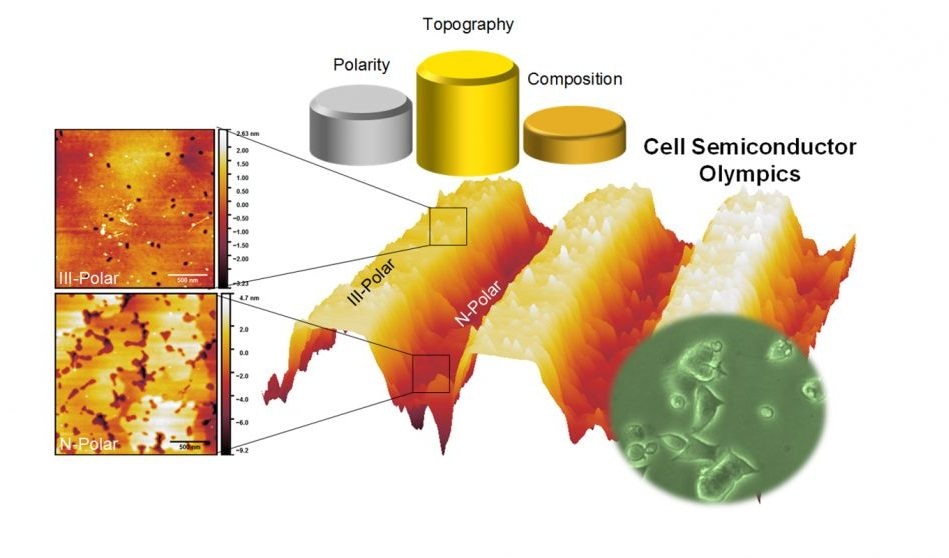Oct 17 2016
 (Credit: North Carolina State University)
(Credit: North Carolina State University)
North Carolina State University researchers have identified that the surface texture of gallium nitride (GaN) materials has the ability to influence the condition of adjacent cells. This is a remarkable development because GaN is a material that has significant importance in the development of new devices capable of controlling cellular behavior.
GaN materials are perfectly apt for bioelectronic devices because of their unique set of properties. These materials are non-toxic, they do not degrade in aqueous environments like the body and the charge can be tuned on the surface of GaN materials.
But while living cells will survive in the presence of GaN, we wanted to know if we could influence the behavior of the cells by changing the make-up of the GaN material. Basically, we wanted to know if engineering the GaN could influence the health and metabolism of the surrounding cells.
Patrick Snyder, Ph.D. Student, North Carolina State University
In order to achieve this, GaN materials and two variations of aluminum gallium nitride (Al0.8Ga0.2N and Al0.7Ga0.3N) were tested by researchers. The researchers created smooth and rough versions of each of these materials by manipulating its surface. As a final step, the surface chemistry of the materials was modified to make them either less or more attractive to water - hydrophobic or hydrophilic respectively.
For instance, there were six different kinds of GaN materials such as, hydrophilic, hydrophobic and unmodified smooth GaN; and hydrophilic, hydrophobic and unmodified rough GaN. Similarly, there are six types of materials for both the AlGaN compositions.
The GaN materials were used by researchers as substrates to grow PC12 cells. PC12 cells are a set of well-studied model cells that can be easily studied and understood.
During the course of the seven-day experiment, the cell cultures were monitored by the researchers in order to analyze the metabolism and health of these cells.
“We found that the roughly-textured AlGaN compositions released more gallium into the cellular environment,” Snyder says. “While this did not kill the cells, it did cause metabolic changes.”
This tells us that the topography of the material matters, and can influence cellular behavior. The work demonstrates that surface textures of bulk materials – like those used to create devices – can have similar effects to what we’ve previously seen in nanoscale materials.
Albena Ivanisevic, Professor of Materials Science and Engineering, North Carolina State University
The paper was co-authored by Ramon Collazo, an assistant professor of materials science and engineering at NC State; and Ronny Kirste, a postdoctoral researcher at NC State who is also affiliated with Adroit Materials. The U.S. Army Research Office under grant W911NF-15-1-0375 and the National Science Foundation under grant DMR-1312582 supported this research.
The paper, “Nanoscale topography, semiconductor polarity and surface functionalization: additive and cooperative effects on PC12 cell behavior,” has been published online in the journal RSC Advances.